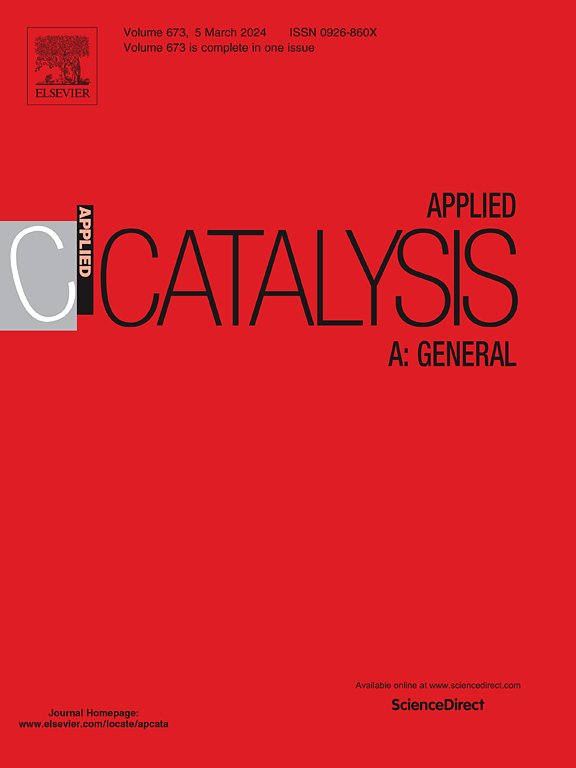压电光催化增强了 Bi2MoO6/KNbO3 异质结中电荷载体的分离和催化性能
IF 4.8
2区 化学
Q2 CHEMISTRY, PHYSICAL
引用次数: 0
摘要
本文通过简单的溶剂热法设计并成功制备了具有ii型异质结的Bi2MoO6/KNbO3光催化剂,并详细研究了复合材料中Bi2MoO6的负载量对压电光催化性能的影响。负载45 % Bi2MoO6的BMO/KN-3复合材料在光照和超声协同作用下对RhB的压电光催化降解效率最高,达到90 %,重复使用5次后降解效率仍保持在81.5 %以上。BMO/KN-3复合材料对其他污染物(MB、TC和CR)的压电光降解效率也分别达到76 %、65 %和97 %。自由基清除实验证实h +在降解过程中起主要作用。理论分析表明,Bi2MoO6/KNbO3复合材料中ii型异质结的构建和光照下压电极化的协同效应极大地促进了相界面处光载流子的分离,从而获得了优异的降解特性。本文章由计算机程序翻译,如有差异,请以英文原文为准。
Piezo-photocatalysis enhanced separation of charge carriers and catalytic performance in the Bi2MoO6/KNbO3 heterojunction
In this paper, a Bi2MoO6/KNbO3 photocatalyst with type-II heterojunction was designed and successfully prepared via a simple solvothermal method, and effect of loading amount of Bi2MoO6 in the composite on the piezo-photocatalytic performance was studied in detail. The BMO/KN-3 composite loaded with 45 % Bi2MoO6 showed the highest 90 % piezo-photocatalytic degradation efficiency of RhB under the synergistic effect of illumination and ultrasound, and the degradation efficiency can still remain above 81.5 % after 5 times of reused. The piezo-photodegradation efficiency of the BMO/KN-3 composite towards other pollutants such as MB, TC and CR also reached 76 %, 65 % and 97 % respectively. The free radical scavenging experiment confirmed that h⁺ plays a major role in the degradation process. Theoretical analysis suggests that the synergistic effect of type-II heterojunction construction and piezoelectric polarization under illumination in the Bi2MoO6/KNbO3 composite greatly promotes the separation of photocarriers at the phase interface, thereby leading to excellent degradation characteristics.
求助全文
通过发布文献求助,成功后即可免费获取论文全文。
去求助
来源期刊

Applied Catalysis A: General
化学-环境科学
CiteScore
9.00
自引率
5.50%
发文量
415
审稿时长
24 days
期刊介绍:
Applied Catalysis A: General publishes original papers on all aspects of catalysis of basic and practical interest to chemical scientists in both industrial and academic fields, with an emphasis onnew understanding of catalysts and catalytic reactions, new catalytic materials, new techniques, and new processes, especially those that have potential practical implications.
Papers that report results of a thorough study or optimization of systems or processes that are well understood, widely studied, or minor variations of known ones are discouraged. Authors should include statements in a separate section "Justification for Publication" of how the manuscript fits the scope of the journal in the cover letter to the editors. Submissions without such justification will be rejected without review.
 求助内容:
求助内容: 应助结果提醒方式:
应助结果提醒方式:


